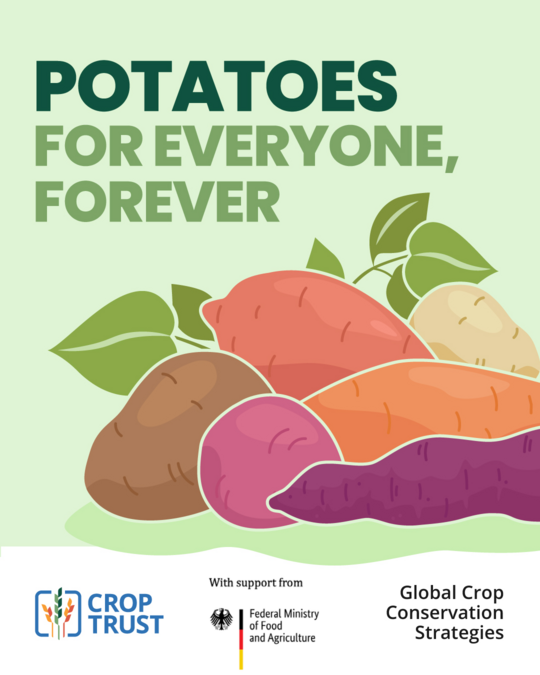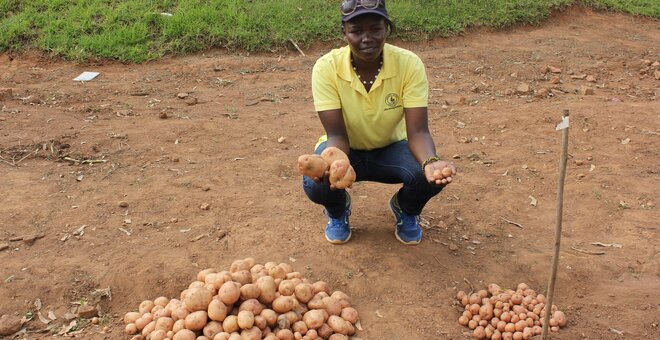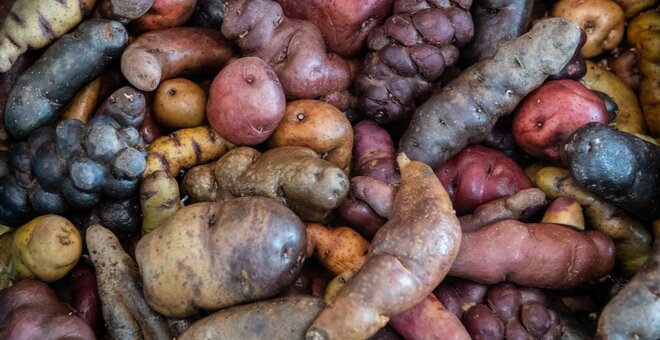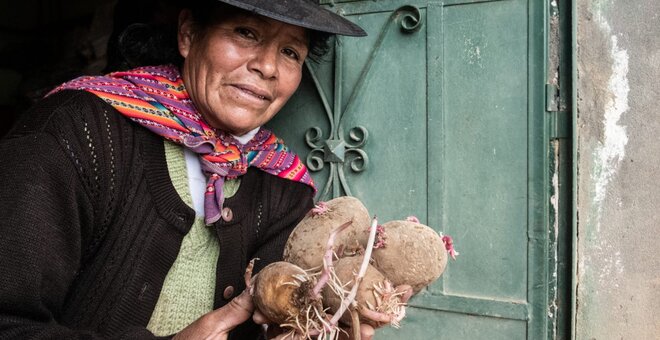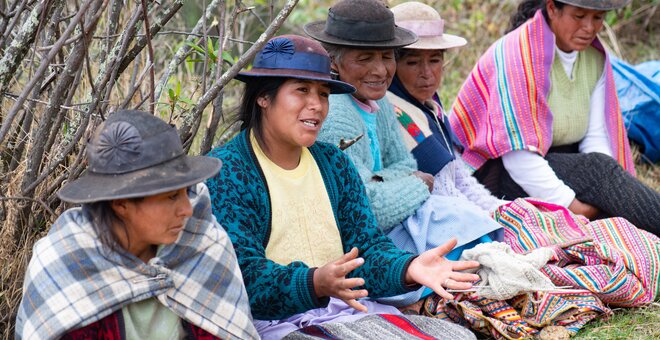The Crop Trust, along with its strategic partners, is developing conservation strategies to protect the genetic diversity of the world’s food crops. This initiative is funded by the German Federal Ministry of Food and Agriculture (BMEL).
- To gain an overview on the current state of the conservation and use of potato genetic resources, Crop Trust commissioned an update of the ‘Global conservation strategy for potato genetic resources’. This updated strategy supports the efficiency and effectiveness of potato diversity conservation at national, regional and international levels, and identifies priorities for strengthening the conservation and use of potato genetic resources.
- Authored by a group of experts, the new strategy is built upon an in-depth review of the existing scientific literature on potatoes, the results of an online survey, the analysis of data available from open databases, and recommendations from discussions with stakeholders.
- An important goal of the conservation strategy is to identify gaps in genebank collections and prioritize filling them, so that the full range of diversity is captured and made available to future generations.
- IN SITU FINDINGS: Traditional landraces are threatened due to the migration of farmers, replacement by other crops and improved varieties, pests and diseases, and low accessibility of virus-free material.
- IN SITU FINDINGS: Among wild potatoes, 26 species are on the IUCN Red List and are threatened by urbanization, fire, and disturbance by humans and livestock.
- IN SITU FINDINGS: Projects in Peru, Bolivia, Ecuador, Argentina, Chile and Brazil have identified conservation sites and strategies to maintain potato genetic diversity in combination with knowledge, culture and traditions. One prominent concept is the support of “guardians” who cultivate and conserve native potato varieties and pass on traditional knowledge to the next generations. Consider playing with the guardians angle as an interesting lead into the story.
- EX SITU FINDINGS. Worldwide, a collection of 82,293 potato accessions is maintained in 89 institutions and four international/regional centers located in 59 countries.
Did you know?
- Wild potatoes are native to the Americas, with highest number of species found in Peru, Mexico, Argentina, Bolivia, Ecuador and Colombia.
- Cultivated potatoes were domesticated in the Andes about 8,000 to 10,000 years ago in a series of several domestication events and from there were spread around the world, most likely from 1562 onwards.
- Cultivated potato, commonly Solanum tuberosum L., is the third most important crop for human consumption and is grown on 16.5 million ha globally

